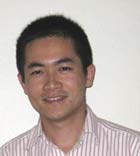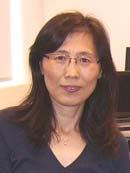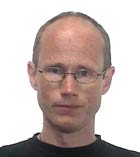Contents: 2024 | 2023 | 2022 | 2021 | 2020 | 2019 | 2018 | 2017 | 2016 | 2015 | 2014 | 2013 | 2012 | 2011 | 2010 | 2009 | 2008 | 2007 | 2006 | 2005 | 2004 | 2003 | 2002 | 2001
2009, 11
A design for timing pulse acquisition in underwater multipath environments
language: English
received 03.08.2009, published 17.09.2009
Download article (PDF, 460 kb, ZIP), use browser command "Save Target As..."
To read this document you need Adobe Acrobat © Reader software, which is simple to use and available at no cost. Use version 4.0 or higher. You can download software from Adobe site (http://www.adobe.com/).
ABSTRACT
A design is proposed for acoustic timing pulse acquisition, and it is suitable for uses in reverberant multipath environments. This scheme uses two identical broadband pulses for timing, and it is motivated by passive phase conjugation. It is simple in signal processing. The first pulse is used as a probe pulse to estimate the channel impulse response, and then the received probe replaces the replica signal later to catch the second pulse. Within coherence time, a fixed threshold can be preset. A detector makes a decision on the correlation coefficient between the first pulse and the second one, as the coefficient has a great immunity to channel impulse response. In this way, it is easy and robust for receivers to realize acquisition. It shows advantages for independent receivers operating in the shallow water channel.
Keywords: acquisition, threshold, timing correlation, passive phase conjugation
12 pages, 13 figures
Сitation: Guosong Zhang, Jens M. Hovem, Hefeng Dong, Tor A. Reinen. A design for timing pulse acquisition in underwater multipath environments. Electronic Journal “Technical Acoustics”, http://www.ejta.org, 2009, 11.
REFERENCES
1. A. Quazi and W. Konrad. Underwater acoustic communications. IEEE Comm. Magazine, pp. 24–29, Mar. 1982.
2. Xiaoyi Hu, Ru Xu, Wei Wei, Jing Liu, and Yongjun Xie. A novel scheme of timing synchronization For OFDM Underwater Communication System. OCEANS 2008 MTS/IEEE Kobe Techno-Ocean, pp. 1–5, Apr. 2008.
3. T. Schmidl and D. Cox. Robust frequency and timing synchronization for OFDM. IEEE Trans. Comm., vol. 45, no.12, pp. 1613–1621, Dec. 1997.
4. US Patent 7218574. High range rate signaling.
5. J. G. Proakis. Digital Communications, NY: McGraw-Hill, 1995.
6. J. M. Hovem, Shefeng Yan, Xueshan Bao, and Hefeng Dong. Modeling underwater communication links. The Second International Conference on Sensor Technologies and Applications, 679–686, Aug., 2008.
7. W. G. MaMullen, B. A. Delaughe, and J. S. Bird. A simple rising-edge detector for time-of-arrival estimation. IEEE Transactions on Instrumentation and Measurement, vol. 45, no. 4, pp. 823–827, Aug. 1996.
8. Bayan S. Sharif, Jeff Neasham, Oliver R. Hinton, and Alan E. Adams. A computationally efficient Doppler compensation system for underwater acoustic communications. IEEE J. Oceanic Eng., vol. 25, no. 1 pp. 52–61, Jan. 2000.
9. Finn B. Jensen, W. A. Kuperman, M. B. Porter, and Henrik Schmidt. Computational Ocean Acoustics. Springer-verlag, New York, 1992.
10. D. Tse and P. Viswanath. Fundamentals of Wireless Communication. Cambridge press, 2005.
11. M. Stojanovic and L. Freitag. Acquisition of direct sequence spread spectrum acoustic communication signals. OCEANS 2003 Proceedings, vol. 1, no. 2, pp. 279–286, 2003.
12. T. C. Yang and W. B. Yang. Performance analysis of direct-sequence spread spectrum underwater acoustic communications with low signal-to-noise ratio input signals. J. Acoustic Soc. Am. 123(2), pp. 842–855, Feb., 2008.
13. P. Hursky, M. B. Porter, J. A. Rice, and V. K. McDonald. Passive phase-conjugate signaling using pulse-position modulation. OCEANS, 2001 MTS/IEEE Conference and Exhibition, vol.4, pp. 2244–2249, 2001.
14. Paul Hursky, Michael B. Porter, and Martin Siderius. Point-to-point underwater acoustic communications using spread-spectrum passive phase conjugation. J. Acoustic Soc. Am. 120(1), 247–257, Jul., 2006.
15. W. A. Kuperman, William S. Hodgkiss, and Hee Chun Song. Phase conjugation in the ocean: Experimental demonstration of an acoustic time-reversal mirror. J. Acoustic Soc. Am. 103(1), 25–40, Jan., 1998.
16. T. C. Yang. Measurements of temporal coherence of sound transmissions through shallow water. J. Acoustic Soc. Am., 120(5), pp. 2595–2164, Nov., 2006.
17. Alan V. Oppenheim and Ronald W. Schafer. Digital Signal Processing. Prentice-hall.
 |
Guosong Zhang is a PhD candidate of Norwegian University of Science and Technology, Trondheim, Norway, and he is working on underwater acoustic communication and signal processing. e-mail: guosong.zhang(at)iet.ntnu.no |
|
 |
Jens M. Hovem is a graduate from the Norwegian University of Science and Technology, NTNU where received the Dr. Ing. degree in 1966. His main fields of interest are underwater acoustics and signal processing. His experience includes two periods at SACLANT Undersea Research Centre (now NATO Undersea Research Centre, NURC) in La Spezia, Italy, both as scientist and Division Chief, and with the SINTEF in Norway. In 1991 he was appointed professor at the Department of Electronics and Telecommunication at NTNU conducting research and giving coursers in underwater acoustics and signal processing. Hovem has been visiting scientist at Applied Research Laboratories (ARL), The University of Texas at Austin in 1979 and 2002 and to C.N.R.S Laboratoire de Mecanique et d’Acoustique, Marseilles, France in 1998. He is now professor emeritus at the Department of Electronics and Telecommunication at NTNU, and senior advisor to SINTEF-ICT. He is the author of the new book “Marine Acoustics - The Physics of Sound in Marine Environments” to be published by Peninsula Publishing. Los Altos, CA, USA. |
|
 |
Hefeng Dong is the professor in acoustics at Norwegian University of Science and Technology, Trondheim, Norway since 2002. Her research interest is in underwater acoustics, numerical modeling of wave propagation in poroelastic medium and geoacoustic inversion. |
|
 |
Tor Arne Reinen received a Ph.D. degree in Electrical Engineering and Telecommunications from Norwegian University of Technology, Trondheim, Norway. He worked as a scientific assistant in telecommunications at NTNU in 1983, and has been employed at the acoustics group of SINTEF ICT from 1984, interrupted by a PhD scholarship 1989-91. In SINTEF he has been working as a research scientist and lately as senior scientist, on physical and technical acoustics, including field and lab experiments, physical modelling and signal processing. He is serving clients from the oil and gas industry, together with military, aerospace, noise abatement, and ultrasound sensor industries. Projects include wave propagation, ultrasound transducer design, ultrasound pulse echo techniques for high temperature applications, vortex induced noise, active noise control, noise classification using neural networks, and monitoring of subsea pipelines. |
|
